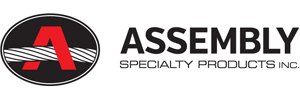Hoisting and Rigging Standard
General
Equipment shall operate with a smooth, regular motion without any hesitation, abnormal vibration, binding, gross shimmy, or irregularity. There shall be no apparent damage, excessive wear, or deformation of any load-bearing part of the equipment. All safety devices, load indicators, boom angle and radius indicators, controls, and other operating parts of the equipment shall be checked during each inspection and shall be in good working order.
Initial Inspection
Prior to initial use, all new or modified cranes shall be inspected as required in “Periodic Inspection,” by a qualified inspector to ensure compliance with the applicable provisions of this chapter. Dated and signed inspection reports shall be kept on file and shall be readily available.
Daily Preoperational Check
- Operators or other designated personnel shall visually inspect items such as the following each day or prior to use if the crane has not been in regular service (records are not required):
- All control mechanisms for maladjustment interfering with proper operation
- Crane hooks and latches for deformation, cracks, and wear
- Hydraulic systems for proper oil level
- Lines, tanks, valves, pumps, and other parts of air or hydraulic systems for leakage
- Hoist ropes for kinking, crushing, bird caging, and corrosion
- Anti-two-block, two-block warning, and two-block damage prevention systems for proper operation
- Booms for damage or deformation of structural components
- Operators or other designated personnel shall examine deficiencies and determine whether they constitute a safety hazard
Monthly Inspection
- The operator or other designated person shall visually inspect the following items for damage, wear, or other deficiency that might reduce capacity or adversely affect the safety of the crane:
- Critical items such as brakes and crane hooks
- Hoist ropes
- Lower the hook block to its lowest position and examine for any condition that could result in an appreciable loss of strength
- Hooks for cracks, deformation, damage from chemicals, latch engagement (if provided), and evidence of heat damage (See Chapter 13, “Load Hooks,” for additional hook requirements)
- A hoist rope with any of the conditions noted in the replacement criteria section shall be removed from service and replaced
- Signed and dated inspection records shall be kept on file and shall be readily available
- Before the crane is returned to service, correct deficiencies that could reduce its capacity or adversely affect its safety
Frequent Inspection
- Operators or other designated personnel shall visually inspect the crane at daily to monthly intervals (records are not required)
- These inspections shall, in addition to the requirements of “Preoperational Check,” include the following: DOE-STD-1090-2007 9-8 Chapter 9 Mobile Cranes
- All control mechanisms for maladjustment, excessive wear, and contamination by lubricants or other foreign matter that could interfere with proper operation
- All safety devices for malfunction
- Rope reeving for noncompliance with crane manufacturer’s recommendations
- Electrical apparatus for malfunctioning, signs of excessive deterioration, and accumulation of dirt or moisture
- Tires for recommended inflation pressure
- Boom sections for damaged, deformed, or missing structural members or parts
- Operators or other designated personnel shall examine deficiencies and determine whether a more detailed inspection is required
Periodic Inspection
- Complete inspections of the crane shall be performed by a qualified inspector at 1- to 12-month intervals, depending on the crane’s activity, severity of service, and environment
- The qualified inspector shall examine deficiencies and determine whether they constitute a hazard.
- Dated and signed inspection records shall be kept on file and shall be readily available
- A sample load test form is included as Exhibit I, which appears at the end of the chapter. This form is intended to be a sample only and is not intended to be mandatory
- These inspections shall, in addition to the requirements outlined in “Monthly Inspection,” and “Frequent Inspection,” include the following
Cranes
Inspect for:
- Deformed, cracked, or corroded members in the crane structure and entire boom
- Bolts, rivets, nuts, and pins for being loose or absent
- Check for suspect/counterfeit parts (see Terminology and Definitions, Chapter 1)
- Cracked or worn sheaves and drums
- Hooks damaged from chemicals, deformation, or cracks, any visibly apparent bend or twist from the plane of the unbent hook, or any distortion causing an increase in throat opening of 5% not to exceed 1⁄4 in. unless otherwise recommended by the manufacturer. Dye-penetrant, magnetic particle, or other suitable crack-detecting inspections should be performed at least once a year. See Chapter 13, “Load Hooks,” for additional hook requirements
- Worn, cracked, or distorted parts such as pins, bearings, shafts, gears, rollers, and locking devices
- Excessive wear on brake and clutch system parts, linings, pawls, and ratchets
- Load, boom angle, and other operating aids over their full ranges for any significant inaccuracies (if calibration is required, it shall be done by a qualified person)
- Gasoline, diesel, electrical, or other power plants for improper performance or noncompliance with safety requirements
- Radiators and oil coolers, for leakage, improper performance, or blockage of air passages
- Excessive wear of chain drive sprockets and excessive chain stretch
- Steering, braking, and locking devices, for malfunctioning
- Excessively worn or damaged tire
- Rust on piston rods and control valves when crane has been idle
Hydraulic and Pneumatic Hose, Fittings, and Tubing
Inspect for:
- Evidence of leakage at the surface of the flexible hose or its junction with the metal couplings
- Blistering or abnormal deformation of the outer covering of the hydraulic or pneumatic hose
- Leakage at threaded or clamped joints that cannot be eliminated by normal tightening or recommended procedures
- Evidence of excessive abrasion or scrubbing on the outer surface of a hose, rigid tube, or fitting (means shall be taken to eliminate the interface of elements in contact or to otherwise protect the components)
Hydraulic and Pneumatic Pumps and Motors
Inspect for:
- Loose bolts or fasteners
- Leaks at joints between sections
- Shaft seal leaks
- Unusual noises or vibration
- Loss of operating speed
- Excessive heating of the fluid
- Loss of pressure
Hydraulic and Pneumatic Valves
Inspect for:
- Cracks in valve housing
- Improper return of spool to neutral position
- Leaks at spools or joints
- Sticking spools
- Failure of relief valves to attain correct pressure setting (relief valve pressures shall be checked as specified by the manufacturer)
Hydraulic and Pneumatic Cylinders
Inspect for:
- Drifting caused by fluid leaking across the piston
- Rod seal leakage
- Leaks at welded joints
- Scored, nicked, or dented cylinder rods
- Dented case (barrel)
- Loose or deformed rod eyes or connecting joints
Hydraulic Filters
Evidence of rubber particles on the filter element may indicate deterioration of the hose, “O” ring, or other rubber components. Metal chips or pieces on the filter may denote failure in pumps, motors, or cylinders. Further checking will be necessary to determine the origin of the problem before corrective action can be taken.
Wire Rope
- A qualified inspector shall inspect wire ropes at least annually. More frequent intervals shall be determined by a qualified person and shall be based on such factors as expected rope life as determined by severity of environment, percentage of capacity lifts, frequency rates of operation, and exposure to shock loads. The qualified inspector shall carefully note any deterioration, such as described below, that results in appreciable loss of original strength and determine whether further use of the rope constitutes an acceptable risk. This inspection shall include examination of the entire rope length without detaching it from the drum.
- Reduction of rope size below nominal diameter, whether due to loss of core support, internal or external corrosion, or wear of outside wires
- The number and distribution or concentration of broken outside wires
- Worn outside wires
- Corroded or broken wires at end connections
- Corroded, cracked, bent, worn, or improperly applied end connections
- Kinking, crushing, cutting, or unstranding
- The qualified inspector shall take care when inspecting running rope where rapid deterioration could occur, such as in the following:
- Sections in contact with saddles, equalizer sheaves, or other sheaves where rope travel is limited
- Sections of the rope at or near terminal ends where corroded or broken wires may protrude
- The qualified inspector shall take care when inspecting certain ropes such as the following:
- Rotation-resistant ropes, because of their higher susceptibility to damage. The internal deterioration of rotation resistant ropes may not be readily observable
- Boom hoist ropes, because of the difficulties of inspection and the important nature of these ropes
- No precise rules can be given for determining the exact time to replace wire rope because many factors are involved. Safety in this respect depends largely on the use of good judgment by an appointed person in evaluating remaining strength in a used rope, after allowance for deterioration disclosed by inspection. Safety of rope operation depends on this remaining strength.
- Removal criteria for wire rope replacement shall be as follows:
- In running ropes, 6 randomly distributed broken wires in one rope lay, or 3 broken wires in one strand in one rope lay
- In standing ropes, more than two broken wires in one lay in sections beyond end connections or more than one broken wire at an end connection
- In rotation resistant ropes, two randomly distributed broken wires in six rope diameters or four randomly distributed broken wires in thirty rope diameters
- One outer wire broken at the point of contact with the core of the rope that has worked its way out of the rope structure and protrudes or loops out from the rope structure; additional inspection of this part of the rope is required
- Wear of one-third the original diameter of outside individual wires
- Kinking, crushing, birdcaging, or any other damage resulting in distortion of the rope structure
- Evidence of heat damage from any cause
- Reduction from nominal diameter greater than the amounts listed in Table 9-2
- All rope that has been idle for a month or more due to shut down or storage of a crane on which it is installed shall be inspected before it is placed in service. This inspection shall be for all types of deterioration and shall be performed by an appointed person whose approval shall be required before further use of the rope. A written and dated report of the rope condition shall be filed
- In order to establish data as a basis for judging the proper time for replacement, a continuing inspection record shall be maintained
- Replacement rope shall be the same size, grade, and construction as recommended by the crane manufacturer, unless otherwise recommended by a rope or crane manufacturer due to actual working condition requirements
- Never use discarded wire rope for slings
Load Hooks/Load Blocks
Load hooks/load blocks that have been changed out shall be inspected by a qualified inspector before returning the crane to service. Inspection records shall be retained throughout the service life of the hook or load block and shall be readily available.
Cranes Not in Regular Use
- A crane that has been idle for 1 month or more but less than 6 months shall be given an inspection according to the requirements of “Frequent Inspection” before being placed in service.
- A crane that has been idle for more than 6 months shall be given a complete inspection according to the requirements of “Periodic Inspection” before being placed in service.
- Standby cranes shall be inspected at least semiannually, according to the requirements of “Periodic Inspection.” Cranes exposed to adverse environments should be inspected more frequently
- The determination supporting these alternate inspection frequencies and procedures shall be made by a qualified person for each affected crane. Documentation supporting this determination shall be kept readily available.

